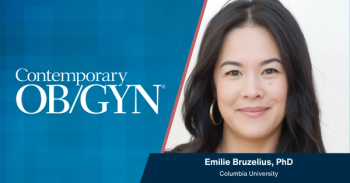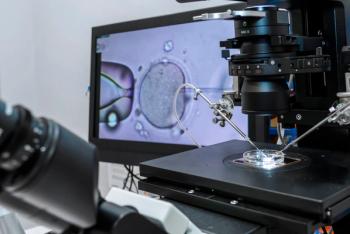
Advancements in Endoscopic Surgery
OBGYN.net Conference CoverageFrom American Association of Gynecological LaparoscopistsLas Vegas, Nevada, November, 1999
Dr. Marshall Smith: "We're very fortunate today to have Dr. Ronald Levine with us at our booth to interview and to discuss some of the advances in technology and progress in endoscopic surgery over the last several years. Dr. Levine is actually one of the pioneers in endoscopic work in the United States. I can still recall some of the first things he did. He brought the first Endoloops into the country, did the first laparoscopic salpingo-oophectomy, did some very good studies on knot-tension and strength, and has actually been a source of my learning over the years. We've invited him as he's got a very good perspective obviously of what's happened in endoscopy surgery. Dr. Levine, we'd like to just get your thoughts on what's happening in the last few years with the progress."
Dr. Ronald Levine: "It's amazing walking around through the exhibits here today, and thinking back as recently as ten years ago when 90% of the material that we're seeing here was not in existence. Certainly all of the technology as far as the computer abilities and the optics - they are absolutely fantastic. We now can look through a 3-mm scope, and indeed smaller ones are here - 1.2-mm fiberoptics that we can look through and have as wonderful imaging. Five millimeter optics are now equally as good as the tens used to be, and this in itself is an enormous leap forward in technology because if we can see well, then this really helps us in what we're doing. I remember a time when we always said we would do such and such if only we had the instrumentation - things such as morcellation. We used to have only the old Semm hand operated morcellator, we now have all types of electronic morcellators that allow us to take tissue out of the body rather safely. It's particularly amazing the abilities in hysteroscopy that we have with ablation techniques, both the ones that don't require any skills - such as the heated balloon technology. So it's almost mind boggling to walk through these exhibits and hear the presentations in relationship to what we had ten, fifteen, and certainly twenty years ago. It's a great deal."
Dr. Marshall Smith: "I'm old enough to remember those days, and I think the fact that what people like Dr. Levine did then- the surgery - speaks of their skill and tenacity to keep operating. Most of what's here is because of some of the ground work that you laid, Dr. Levine."
Dr. Ronald Levine: "Thank you very much."
Dr. Marshall Smith: "Thank you very much for being here with us."
Dr. Ronald Levine: "I appreciate it."
Newsletter
Get the latest clinical updates, case studies, and expert commentary in obstetric and gynecologic care. Sign up now to stay informed.
















